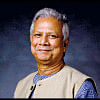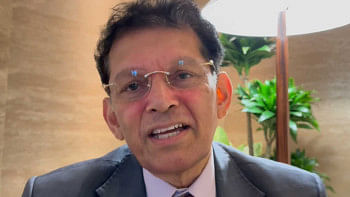Implications and strategies for Bangladesh

On April 2, 2025, US President Trump introduced sweeping reciprocal tariffs, effectively reversing nearly all US tariff liberalisation since the Great Depression of the 1930s.
The average US tariff surged from 2.5 percent to 20 percent with a single executive action. This move signals the onset of a global tariff war reminiscent of the Smoot-Hawley Tariff of 1930, which imposed a 20 percent duty on 20,000 imported items.
While its intention was to protect American farmers and businesses, it had unintended consequences that exacerbated the Great Depression. The act led to retaliatory tariffs from other countries, significantly reducing international trade by 67 percent between 1929 and 1934.
Reciprocal tariffs set US tariff rates to match the highest levels imposed on American exports, with potential reductions contingent on meeting specific demands.
President Trump justifies this policy as a measure to protect US industries and correct trade imbalances, asserting that the US has been unfairly treated by other nations. Viewing trade as a zero-sum game, he argues that lower import tariffs compared to export tariffs disadvantage the US Rejecting free trade agreements, his goal is to realign trade dynamics in favour of the United States.
An overview of the new tariff regime
Bangladesh now faces a 37 percent reciprocal tariff. In 2023, Bangladeshi imports to the US were subject to an average tariff of 15.7 percent, generating $1.02 billion in customs duties on $8.28 billion worth of goods.
Tariffs play a significant role in Bangladesh's trade policy and revenue generation, with an average applied MFN tariff of 14.8 percent. Agricultural products face higher protection at 18.1 percent, compared to 14.1 percent for non-agricultural goods.
Textiles and apparel, already burdened by some of the highest US tariffs, continue to face challenges. Pew Research highlights the disproportionately high taxes on clothing and footwear imports from Bangladesh in the US Despite this, Bangladesh is subject to reciprocal tariffs due to USTR estimates that the combined tariff, para-tariff, and tariff equivalent of non-tariff barriers against US imports into Bangladesh is 74 percent.
President Trump claims to be generous by offering a "kind reciprocal tariff discount" of 50 percent to all countries, including Bangladesh.
Amidst this drastic shift in US trade policy, there is a silver lining: competitors face similar or even higher reciprocal tariffs.
For example, Vietnam is subject to 46 percent, India 26 percent, Cambodia 49 percent, Sri Lanka 44 percent, Thailand 36 percent, Pakistan 29 percent, Myanmar 44 percent, Laos 48 percent, China 34 percent, and Indonesia 32 percent.
India's 26 percent and Pakistan's 29 percent are not too far behind. This suggests that Bangladesh's competitiveness relative to its rivals remains largely unchanged.
However, this offers little comfort in the face of a potential global demand contraction triggered by the Trump tariffs. If tit-for-tat dynamics escalate, it remains uncertain whether Trump will reverse course, as he did earlier this year with Canada, Mexico, and China.
What should Bangladesh do?
The immediate priority is damage control, as the reciprocal tariffs are already in effect, with no time allowed for a smooth transition. Even goods currently en route to the US will be subject to the new tariffs, raising the critical question: Who will bear the cost?
Our strategy should aim to shift the tariff burden onto buyers. A key advantage is that buyers have limited alternatives, as many of our competitors face similar or even higher reciprocal tariffs.
However, fierce competition among sellers poses a significant challenge, enabling wholesale buyers like Walmart and Target to pass the tariff costs onto us. To counter this, it is crucial for sellers to collectively agree not to accept a reduction in prices to offset the tariff.
The relevant association must closely monitor renegotiated prices and enforce penalties for non-compliance with this agreed position.
Additionally, we should explore the possibility of qualifying our exports for duty exemptions by emphasising their status as low-priced essential products.
Looking ahead, Bangladesh must tackle the 74 percent combined tariff rate on US imports. The legitimacy of this tariff—whether reciprocal or punitive—depends on the accuracy of the USTR's calculations.
It appears that the USTR has simply divided the bilateral trade deficit by US imports from the respective country to calculate the combined tariff rate.
For instance, with Bangladesh, the bilateral trade deficit was $6.2 billion, and US imports from Bangladesh totaled $8.4 billion in 2023. Hence, the ratio 6.2/8.4 equals 74 when expressed as a percentage.
This method's arbitrariness is difficult to comprehend. Nonetheless, it is undeniable that average tariffs in Bangladesh are high at 14.8 percent, and nearly double that when para-tariffs are included. The restrictiveness of non-tariff barriers, with an average ad valorem equivalent of nearly 200 percent (World Bank, Change of Fabric 2022), far surpasses that of tariffs.
These barriers include burdensome sanitary and phytosanitary requirements, technical barriers to trade, pre-shipment inspection, nonautomatic licensing requirements, and price control measures.
The USTR's 2025 Foreign Trade Barriers report serves as a negotiating guide, outlining reforms necessary to reduce the combined tariff rate on US imports.
It highlights tariff and non-tariff barriers in Bangladesh's import policies, corruption in government procurement, inadequate intellectual property protections, unrestricted government access to computer systems, data localisation requirements for classified information, criminalisation of certain forms of free expression, internet shutdowns, equity caps on foreign ownership, delays in repatriating investment-related capital, export subsidies, worker rights violations, and bribery and corruption.
The report acknowledges the interim government's recognition of these issues and its commitment to reform.
For instance, it notes that the interim government has agreed to formal repayment agreements with US companies owed arrears and pledged to streamline bureaucratic processes for repatriating investment-related capital.
The report also credits the government's investigation into the internet shutdown in July, revealing it lacked judicial or administrative approval.
It positively views the draft Cyber Protection Ordinance approved on December 3, 2024, and applauds efforts to enhance transparency in procurement by halting direct negotiations initiated by the previous regime.
Bangladesh must leverage the goodwill generated by these reform commitments to finalise and implement changes that could reduce the combined tariff rate, ensuring a more favorable trade relationship moving forward.
Will the Trump tariff stick?
Trump views tariffs as a catch-all solution—to raise revenue, reduce trade deficits, reshore manufacturing, protect national security, ensure reciprocity, and even penalize countries for issues like migration or drug trade. However, history is filled with examples of failed attempts at tariff protection. Targeting trading partners does little to resolve domestic challenges and instead harms the US economy while fostering foreign resentment and retaliation, compounding the damage.
A universal tariff on all imports is neither practical nor effective. Even as a negotiating tool, tariffs cause significant collateral damage. Business media is now rife with terms like uncertainty, chaos, and retaliation.
The erratic trade policy—characterized by steep tariffs, threats, and sudden reversals—has driven economic uncertainty to levels exceeding those of the 2008 financial crisis.
Trump has acknowledged the short-term economic pain caused by tariffs, indicating they won't be quickly removed as part of broader negotiations.
However, if stock markets crash, the US economy slips into stagflation, and Trump's approval ratings plummet, he may retreat from the tariff war as abruptly as he initiated it.

 For all latest news, follow The Daily Star's Google News channel.
For all latest news, follow The Daily Star's Google News channel. 










Comments